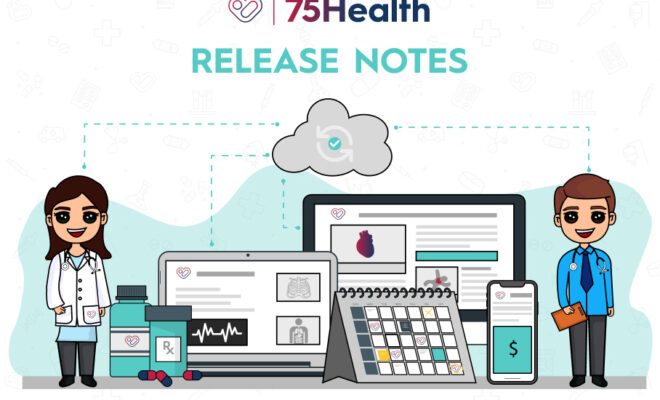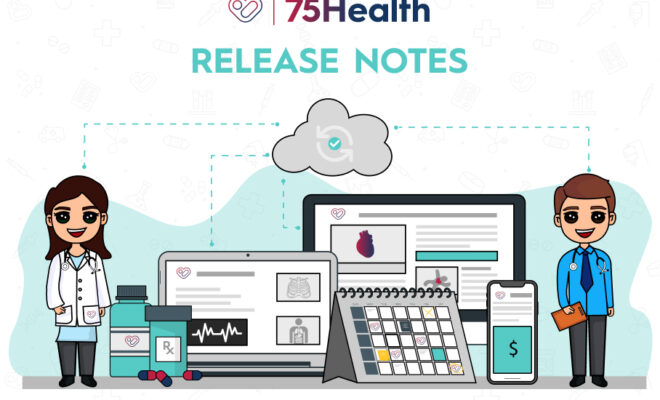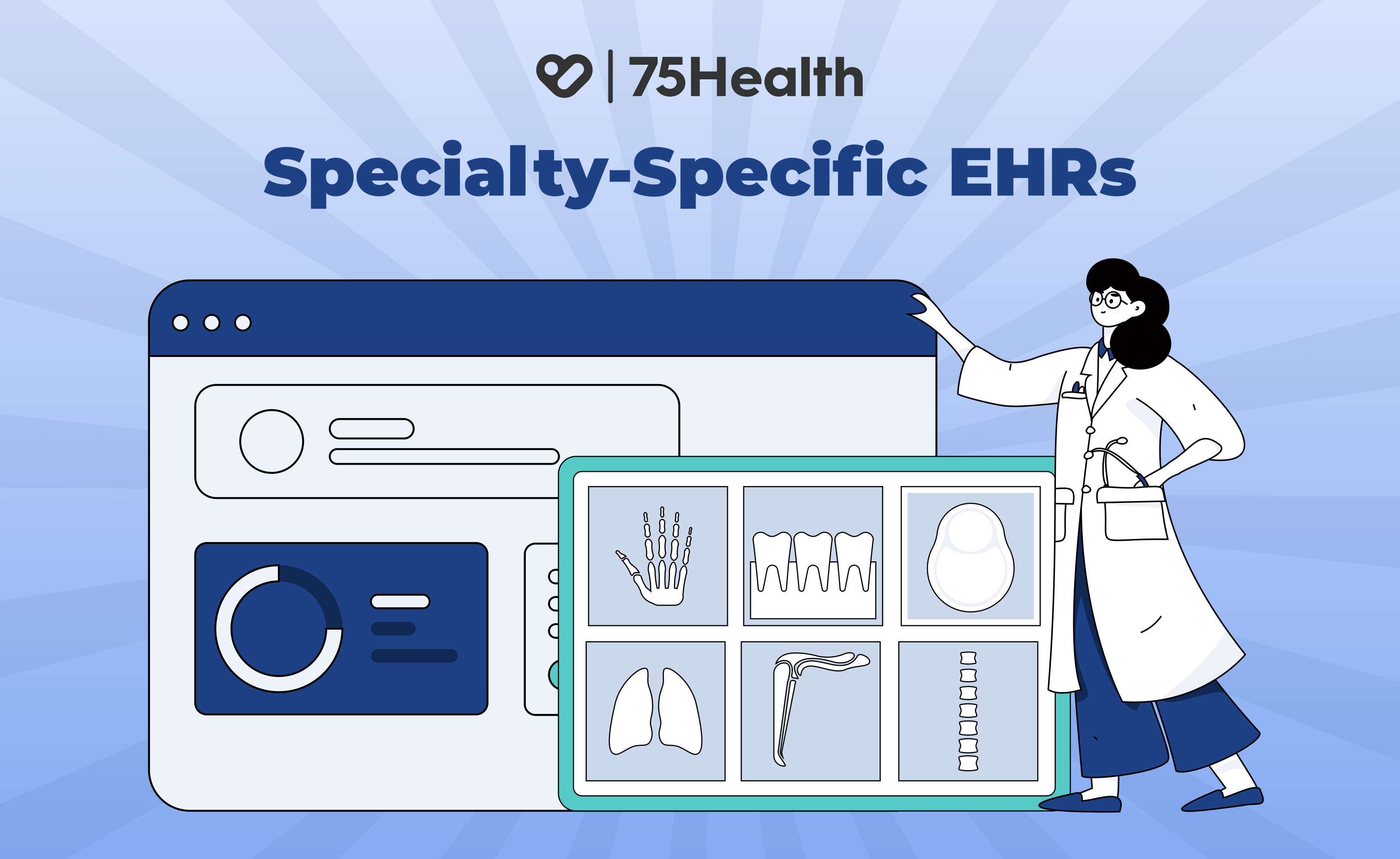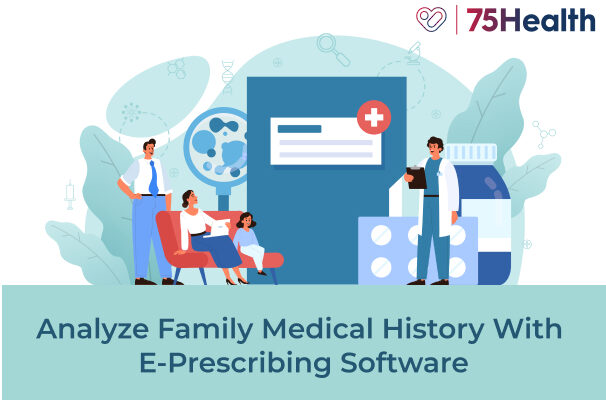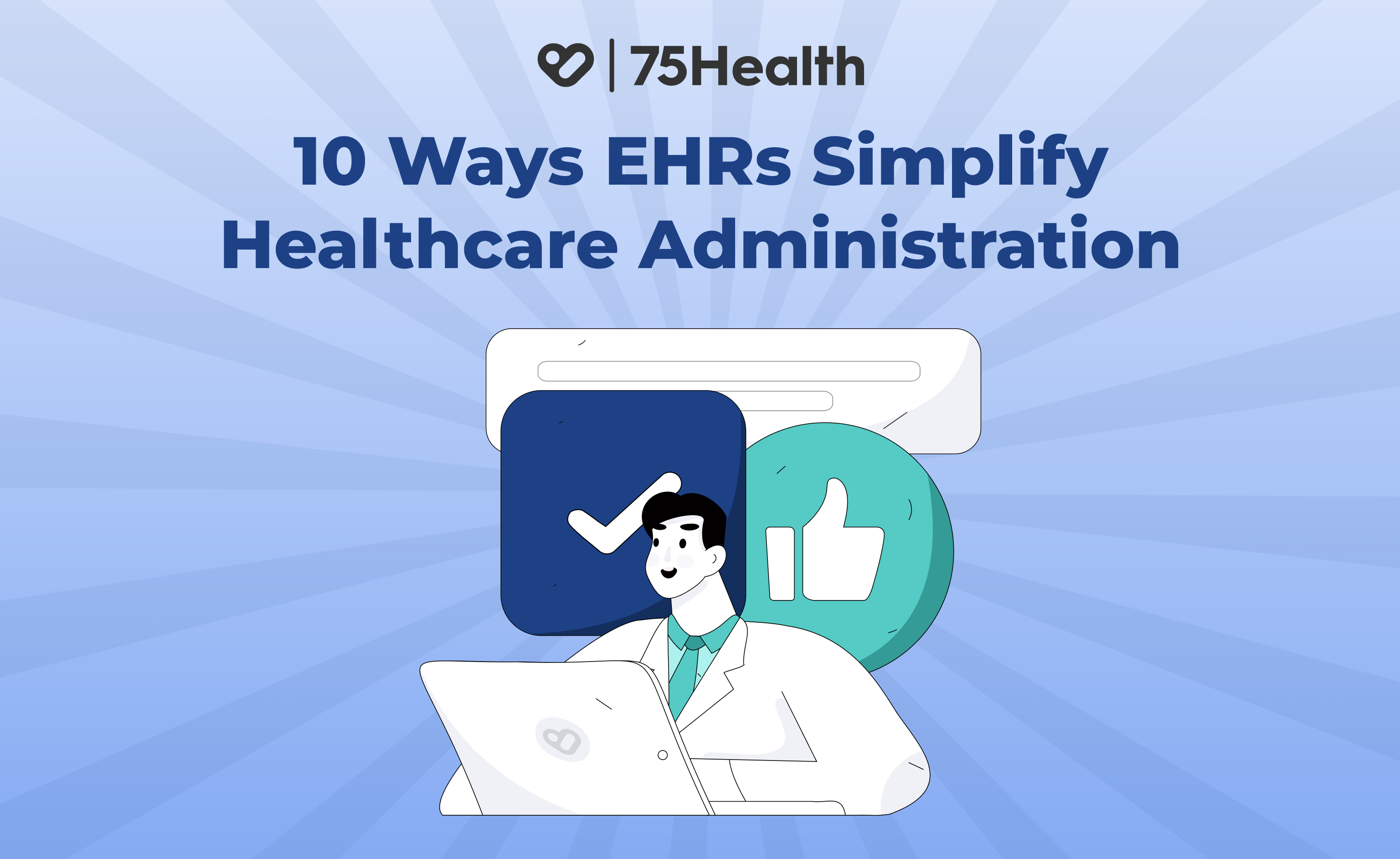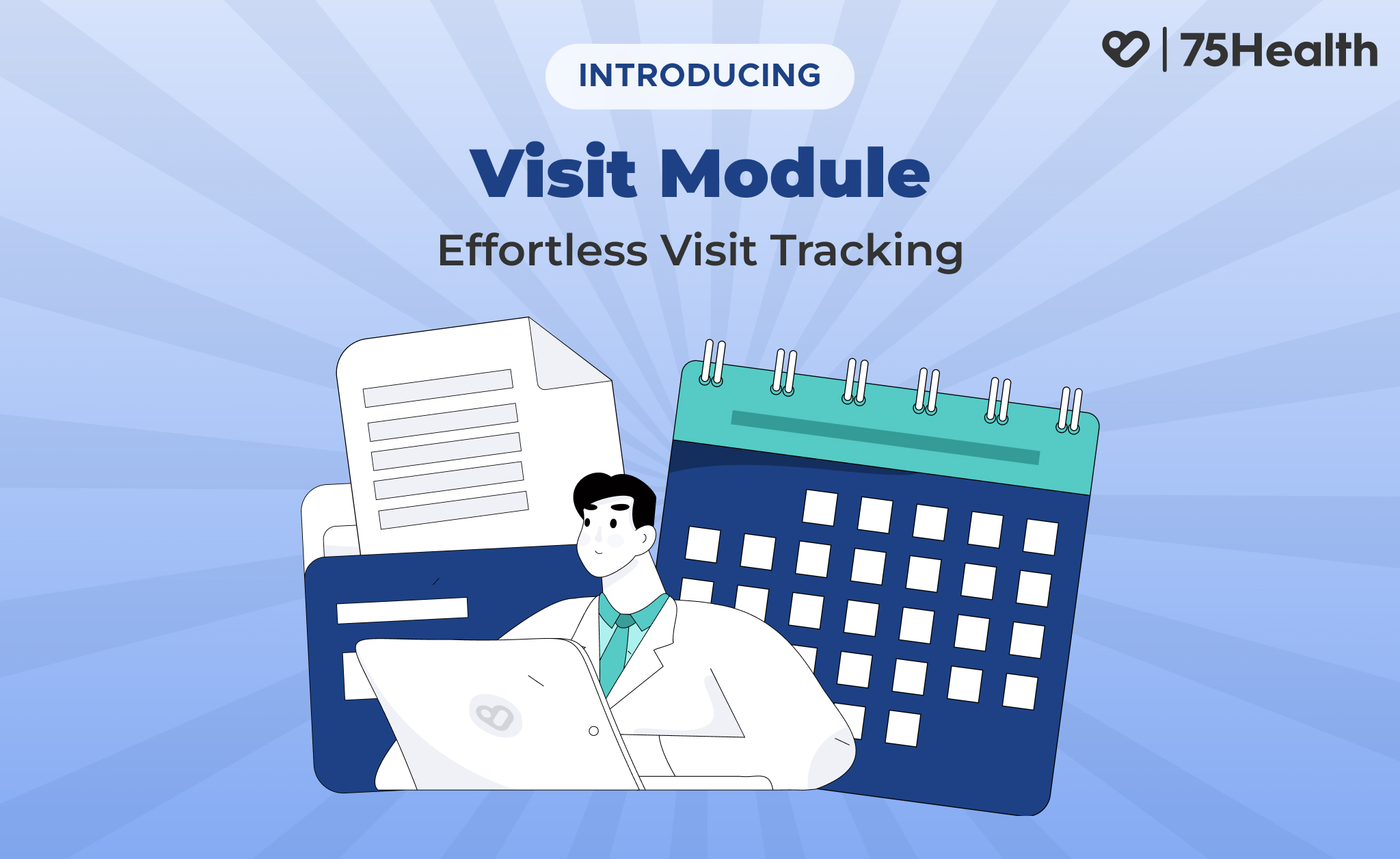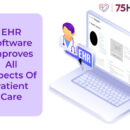Step-by-Step Medical Claim Processing: EHR to Clearinghouse to RCM
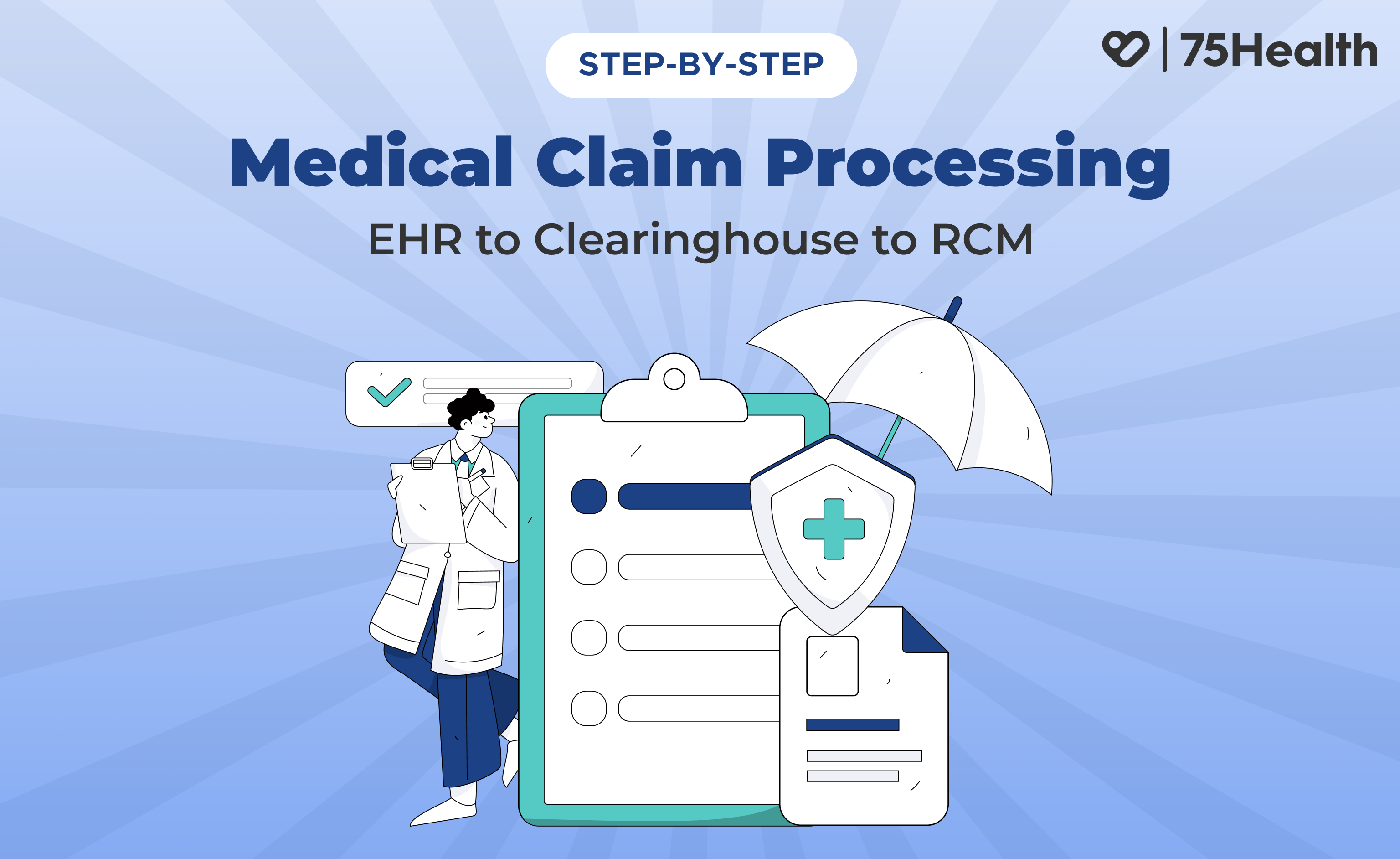
Revenue management and tracking can often feel like a bottleneck and be overwhelming. This blog aims to guide providers, billers, and administrators through how medical billing data is transformed and transmitted within the healthcare IT ecosystem and highlight the crucial role of integration between EHRs, clearinghouses, and RCM systems in achieving timely reimbursements and minimizing claim rejections.
Since this is one of the most critical features in an electronic health record EMR software for ensuring a complete billing cycle, we’ll break down each step to make it simple and easy to understand.
Pre-requisite: Provider Credentialing with Payers
Providers must already be credentialed and fully enrolled with the payers before they can enter clinical and billing data.
As part of the credentialing process:
- Providers must share their NPI (National Provider Identifier) with the payer.
- Once the NPI registration is approved, the payer grants credentials and access for billing.
- The NPI serves as the primary identifier for all future claims processing.
Once the credentialing is completed the provider is ready to proceed using the EHR system for generating and submitting claims.
The Claim Processing Workflow Follows a Structured Process
Step 1: Patient’s Insurance Eligibility Verification
Insurance eligibility verification (270/271) is the first step in the billing cycle and occurs before claims processing is initiated.It ensures that the patient’s insurance is valid and the upcoming treatments are covered under their health plan.
A lot of EHRs or integrated RCM systems verify:
- Insurance policy status
- Service coverage specifics
- Patient deductibles, co-pays, and referral requirements
- Plan restrictions or exclusions
Eligibility verification at the outset can help ensure that providers maximize their revenue cycle and do not needlessly face denials or delays in their revenue cycle with the process already initiated and established.
Step 2: EHR Data in CMS-1500 Format
- Providers input patient demographics, diagnoses, treatments, and other clinical data into the cloud medical EHR.
- This standardized form includes essential medical codes such as CPT, ICD, and HCPCS to ensure accurate billing and claim processing.
- Once collected, the EHR data will be submitted in the CMS-1500 format for claims processing.
Step 3: Claim Submission to Clearing House
- The EHR system transforms CMS-1500 format data into the 837 format, ensuring HIPAA or region-specific compliance. This standardized format prepares the claim for electronic transmission.
Step 4: Clearing House Review and Scrubbing
- The clearing house checks for common errors such as missing data, invalid codes, incorrect insurance details.
- Converts claims into payer-specific formats.
- Routes the claim to the appropriate payer (Insurance Company)
Step 5: RCM Review- Before Payer Processing
By the way, let’s have a quick look on RCM
What is RCM?
RCM stands for Revenue Cycle Management. It supports efficient revenue tracking and financial management for healthcare providers. RCM encompasses patient registration, insurance verification, claim submission, denial management, patient billing, performance monitoring, collection and timely reimbursements for rendered services.
As outlined above, RCM is a comprehensive financial process that ensures healthcare providers experience a smooth, hassle-free billing cycle.
Hence before the claim reaches the payer, the RCM system steps in to perform another layer of checks.
- Reviews the claim for any remaining errors and resolves missing or incorrect information.
- Follow up on potential rejections before submission.
- Ensures that the claim is “clean” before it reaches the payer.
Step 6: Payer Processing
The payer (insurance company) receives the claim and processes the claim:
- Verifies patient eligibility and policy coverage.
- Reviews the claim for medical necessity.
- Applies contract rates, deductibles, and co-pays.
- Determines approval, partial payment, or denial.
Once processed, the payer sends an Electronic Remittance Advice (ERA) in the 835 format back to the RCM system.
Step 7: Payment Processing and Reconciliation
RCM plays a dual role, before payer processing (as above) and after.
Once the claimant has been processed, payment is automatically directed from the payer to the provider and an Electronic Remittance Advice (ERA) is sent to the provider that explains how the payment was derived.
The Explanation of Benefits (EOB) sent to the patient shows what is covered, what is denied, and what the patient owes.
Once the ERA is received:
- Payments are posted to the patient’s account.
- Patient statements are generated.
- Balances are managed, and collection processes are initiated.
- If a claim is denied, the system triggers corrections, resubmissions, or appeals.
- Patients are billed for any remaining balances (co-pays, deductibles, etc.).
Step 8: Reporting and Analytics
The RCM system generates:
- Financial performance reports
- Denial management insights
- Revenue forecasting dashboards for the healthcare provider
This supports continuous improvement in claim accuracy and cash flow management.
Conclusion:
Whether you use an EHR with built-in RCM features or a standalone RCM system integrated with your medical EHR system, having a well-connected setup is highly recommended for streamlined claim submissions and faster reimbursements
